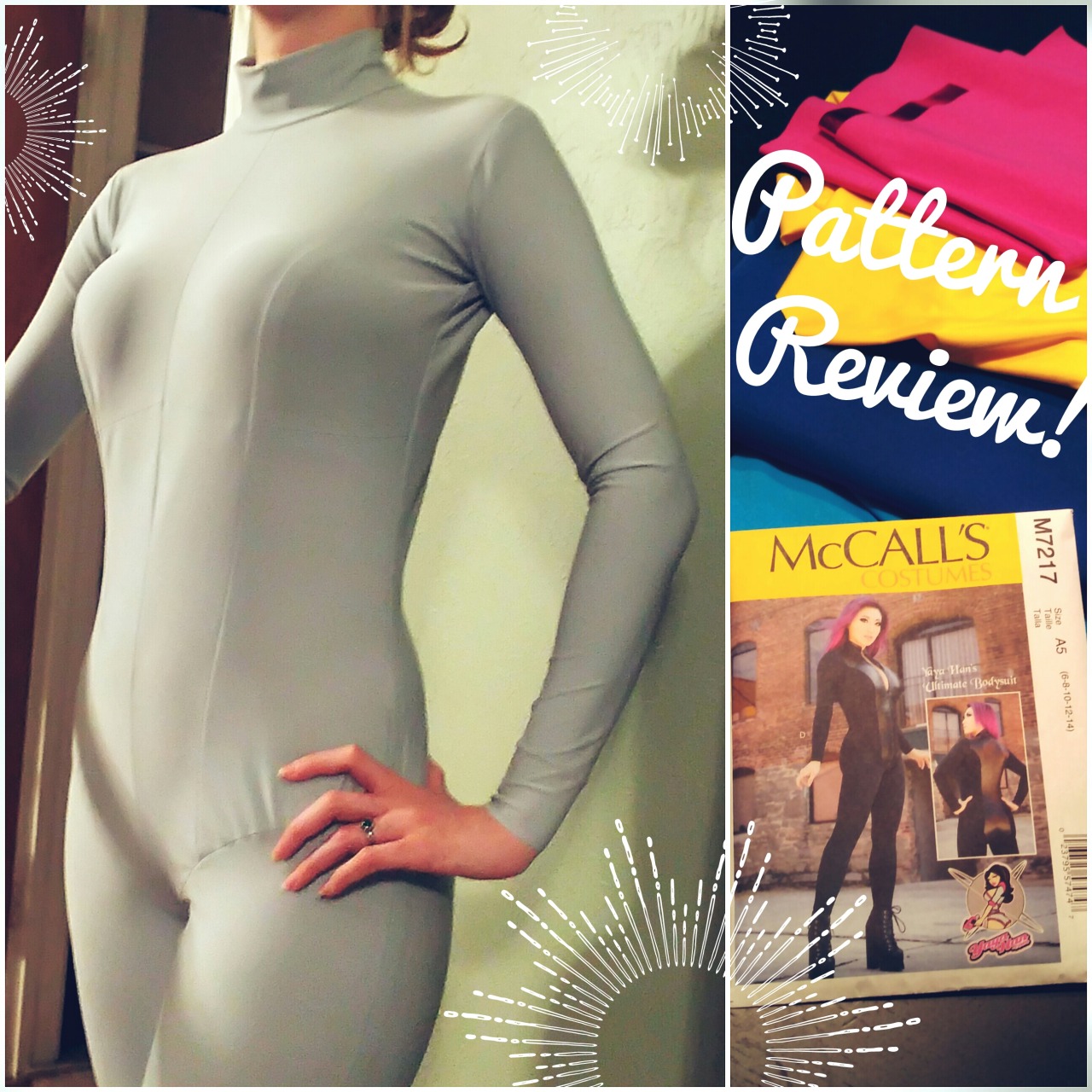Modeling my first mockup of the pattern. From here, customization and tailoring can really take your bodysuit to the next level.
(Originally published on tumblr in 2015)
I gave this pattern a try while prepping for my recent Zero Suit Samus cosplay. I have a few bodysuit options in my pattern stash already; in the past, I’ve constructed bodysuits using my own drafted patterns and Kwik Sew 3052, as well as customizing multiple derivative patterns using either of the above as a base. When I got my hands on Yaya Han’s Ultimate Bodysuit Pattern, I wanted to see how it stacked up and whether it could live up to its title as a go-to bodysuit pattern in the future.
The major difference between this pattern and other bodysuit patterns I’ve used before is the large number of panels. The torso consists of 12 panels alone, plus two panels for each leg, and one for each arm and collar. Bodysuits can be made with as few as one panel for the legs and torso combined; this pattern breaks up the same area into 16 different pieces. More panels means more time spent cutting, pinning, and sewing; however, every seam provides another opportunity to more finely-tune the fit. If your end goal is to make a solid color bodysuit or one with simple seam lines, an experienced seamstress will probably end up combining some panels where the extra seams are unnecessary. With this in mind, having a multitude of panels has limited benefits. If your end goal is to make a bodysuit with complex seams and many panels, such as the Zero suit or a plugsuit, starting with a closely fit mockup has more of an advantage.
Each section of the bodysuit is divided up with reconfiguration in mind. For instance, separating the leg and arm pieces allows you to omit them if desired. Another example is the undercup seam, which is not really necessary unless your bust size rivals Yaya Han’s (in which case, congratulations.) However, isolating the bust on its own pattern piece allows you to easily select your cup size from the pattern’s three available options.
The versatility of these pieces is one of the pattern’s main selling points. It’s convenient to have both a center front and center back seam to choose the placement of your zipper. However, unless you enjoy the aesthetic of having many seams, it will take some extra leg work to eliminate them (spoiler alert: neither the center front or center back panels can be cut on the fold straight out of the envelope).
The packaging states that the pattern is for use with two-way stretch knit fabric only. It’s written on every piece so that you can’t miss it. I suppose that this is intended to discourage the use of non-stretchy fabric moreso than four-way stretch fabric, because four-way stretch fabric will also work just fine if you’re prepared to make any corresponding fit adjustments. From an instructional standpoint, it’s more practical to identify a specific fabric type as a standard point of reference. For this pattern, the intended outcome is a two-way stretch bodysuit which stretches along the body’s length but not its width. For this reason, accurate fitting is crucial.
The pattern does not include instructions for fitting after construction. To be fair, the specifics of fitting a bodysuit vary widely based on the individual figure and the fabric used. In my particular case, the torso fit pretty well with only minor adjustments. However, the armscye was extremely large for my shoulder, while the legs were very small in both length and width. These types of fit issues can be completely different from person to person, so this is not a complaint about the pattern or a suggested alteration for the rest of you. Instead, I stress the importance of measuring your body ahead of time and making flat alterations to the paper pattern before cutting anything. It will save you a lot of time and cut fabric, particularly with a pattern which needs to be as closely fit as this one.
Once you’ve put in the work to customize it to your size, this pattern is as good as bodysuits get. It’s designed as a catch-all intended to be useful in the greatest possible number of situations. But that does not always make it the easiest or most straightforward base pattern for your specific situation. If your end goal is a complex, closely-fit bodysuit with many panels, this pattern will facilitate a more finely-tuned mockup than any other commercial pattern I’ve seen on the market. If you’re looking to make a very basic bodysuit with limited colors and seams, you can save yourself some time and effort by starting with a simpler base pattern.
Verdict: this is a good and useful bodysuit pattern, but not necessarily accessible to a beginner. If you are a competent seamstress who is willing to put in some time and several mockups to arrive at the perfect fit, this pattern is a fantastic starting point! But if you are inexperienced or intimidated by the thought of putting together a bodysuit, this pattern will not hold your hand. There are far simpler options on the market which are more suited for learning.

